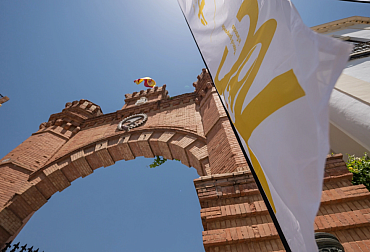Interest of European countries in modern artillery systems continues this year as well
More than two years since the start of the open war between Russia and Ukraine, artillery has played one of the most important roles in the conflict. Many European countries are aware of this fact and are modernising their artillery forces. In the first six months of this year, France, Estonia, Croatia and Romania have decided to invest in the modernisation and purchase of new howitzers.
At the end of January this year, the KNDS consortium announced that the French Ministry of Defence had ordered a total of 109 Caesar howitzers in the latest MkII version from the company Nexter, which is part of KNDS. According to media reports, the contract to order the latest Caesar MkII howitzers is one of the points of France's defence planning for 2024-2030. It is expected that the first modern howitzers of French origin could be supplied to the army in 2026.

The Caesar MkII self-propelled howitzers have been in development since 2021, reflecting the French Army's experience and lessons learned from operations in Afghanistan and the Sahel region. The biggest difference from the previous version of Caesar systems is improved ballistic and mine protection, where the crew is better protected against improvised explosive devices and small calibre projectiles. It also has a more powerful engine and an open architecture for future integration of state-of-the-art radios. According to published information, the Caesar MkII howitzers are expected to replace the AMX-30 AuF1 tracked howitzers and later the Caesar MkI systems in the French army's arsenal.
Romania will also see a significant transformation of its artillery in the coming years. According to the Ministry of Defence of Romania, the country has selected K9 Thunder howitzers of South Korean origin as part of the modernisation of its artillery. Although no official contract has yet been signed for the order of K9 Thunder self-propelled howitzers, Romania is expected to buy a total of 54 of these systems. At the same time, it should be noted that Romania does not currently have 155-millimetre calibre howitzers, i.e. western calibre howitzers.
The information about Romania's interest in K9 Thunder howitzers appeared in the media during the official visit of South Korean Defence Minister Won-sik Shin to Romania, where he discussed deepening defence cooperation with this Eastern European country. It is also no secret that the South Korean defence industry could succeed in Romania with the K2 Black Panther tank, which was also recently presented in Romania. Going back to the K9 howitzers, however, it is not yet clear which version of the K9 howitzers Romania would buy. There is also speculation about the K9A2 version, which was recently presented by the manufacturer of these howitzers, Hanwha Defence. The choice of the specific type of howitzers will subsequently affect the overall value of the contract.
Further developments in the field of artillery modernisation on the European continent were brought by this year's Eurosatory exhibition. During this fair, France, Croatia and Estonia signed a joint purchase plan for Caesar systems. According to an official statement by the Centre for Defence Investment of Estonia, Estonia will purchase a total of 12 French-made Caesar howitzers with an option for additional units. The acquisition of Caesar self-propelled guns for the Estonian army corresponds with the Centre for Defence Investment of Estonia strategy for 2024-2028, which includes the purchase of new wheeled self-propelled howitzers. Officials at the Estonian Centre for Defence Investment consider the cooperation with France to be one of the key ones within NATO and the Caesar howitzers to be one of the best combat-proven systems available on the market. It is expected that Estonia will receive the first French-made howitzers later this year and the rest during the next year.
As already mentioned, Croatia also intends to procure Caesar howitzers. It currently has a total of 13 PzH 2000 self-propelled howitzers and a few 2S1 Gvozdika guns in its arsenal. As in the case of Estonia, this is a move to deepen defence cooperation with France and thus to increase the interoperability of the armed forces within NATO. However, it is not yet known how many Caesar howitzers Croatia has expressed interest in.








